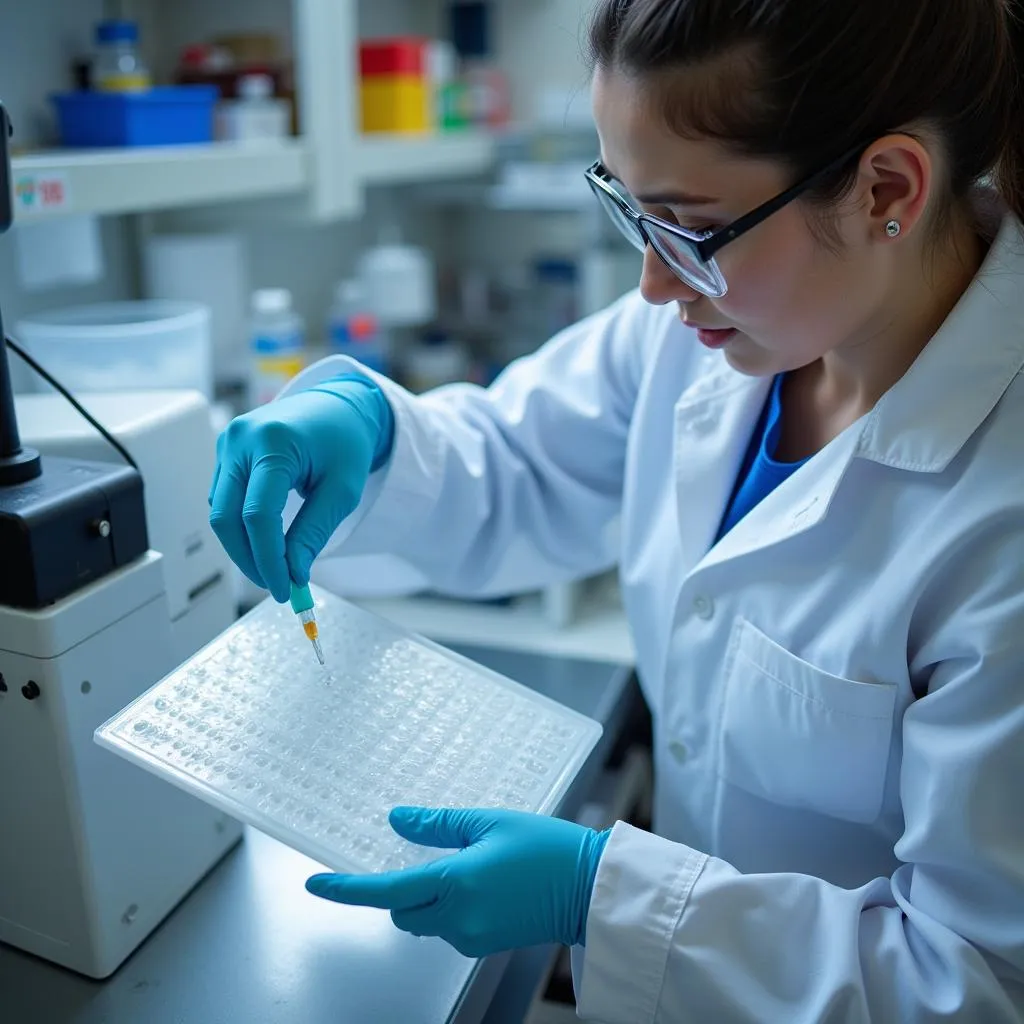Understanding the Versatility of a 24 Well Filter Plate
October 9, 2024The 24 Well Filter Plate has become a cornerstone in laboratories worldwide, offering a compact and efficient tool for a variety of scientific applications. From cell culture to drug discovery, this unassuming plate plays a crucial role in advancing our understanding of the world around us. But what exactly makes it so versatile, and how can researchers choose the right plate for their specific needs?
Delving into the Design of a 24 Well Filter Plate
 A Close-Up of a 24 Well Filter Plate Design
A Close-Up of a 24 Well Filter Plate Design
A 24 well filter plate, at its core, is a shallow rectangular plate containing 24 individual wells arranged in a 4×6 grid. Each well houses a porous filter membrane at its base, serving as a semi-permeable barrier. This seemingly simple design allows for the separation of liquids from solids, the purification of samples, and even the culture of cells in a controlled environment. The choice of material for both the plate and the membrane dictates the specific applications it is suitable for.
Key Applications of a 24 Well Filter Plate
The beauty of the 24 well filter plate lies in its adaptability across various scientific disciplines. Let’s explore some of its key applications:
-
Cell Culture: Researchers rely on these plates to study cell growth, behavior, and response to various stimuli. The filter membrane allows for the exchange of nutrients and waste products, creating an optimal environment for cell proliferation.
-
Drug Discovery: In the quest for new drugs, 24 well filter plates are instrumental in screening potential candidates. By exposing cells cultured in the wells to different compounds, scientists can observe their effects and identify promising leads.
-
Sample Preparation: From environmental samples to biological fluids, these plates aid in the isolation and purification of specific components. The filter membrane selectively retains particles of a certain size, allowing researchers to target their analysis.
 Scientist Conducting an Experiment with a 24 Well Filter Plate
Scientist Conducting an Experiment with a 24 Well Filter Plate
Choosing the Right 24 Well Filter Plate: Factors to Consider
With a plethora of options available, selecting the right 24 well filter plate for a specific experiment is paramount. Several factors come into play:
-
Filter Pore Size: This crucial parameter determines the size of particles that can pass through the membrane. Selecting the appropriate pore size ensures efficient separation and accurate results.
-
Membrane Material: Different materials exhibit varying chemical compatibility and flow rates. Common choices include Polyethersulfone (PES), Polyvinylidene fluoride (PVDF), and nylon, each catering to specific applications.
-
Plate Format: While the 24 well format is widely used, variations exist, such as plates with low binding properties for sensitive assays or plates designed for specific automated systems.
-
Sterility: For cell culture and other sensitive applications, sterile plates are essential to prevent contamination and ensure reliable results.
Maximizing Efficiency: Tips for Using a 24 Well Filter Plate
-
Priming the Filter: Before adding your sample, pre-wetting the filter membrane with the appropriate solution ensures consistent flow and reduces the risk of air bubbles trapped within the membrane.
-
Avoiding Cross-Contamination: Using dedicated pipettes for each sample and changing pipette tips between wells are crucial steps in preventing cross-contamination and maintaining the integrity of your experiment.
-
Proper Storage: Storing unused plates in a clean, dry environment at the recommended temperature helps maintain their quality and prolongs their shelf life.
Conclusion
The 24 well filter plate, despite its unassuming appearance, has revolutionized laboratory workflows across disciplines. Its adaptability, ease of use, and wide range of applications make it an indispensable tool for scientists. By understanding the key factors influencing plate selection and adhering to best practices during use, researchers can harness the full potential of this versatile tool and unlock new scientific discoveries.